#PhysicsGotMeHere 2020
(Known as Hidden Physicists)
Hidden Physicists from 2020 are Nicola Ramm, Leon Smith, Shermiyah Rienecker, Phil Dooley, Sarah Midgley OAM, Matthew Wiggins, Sarah Lugay, Jonathan Hall, Andreas Schreiber and Toby Hendy.
Meet Toby Hendy, Febuary's Hidden Physicist
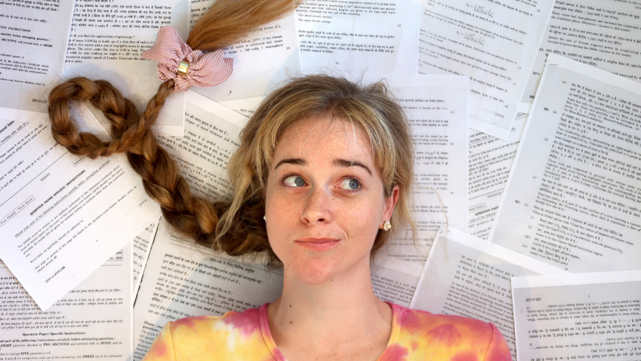
Employer: Self-employed
Job and description: YouTube Content Creator – I make videos about physics and maths on my YouTube channel ‘Tibees’. My work combines my interests in science communication and video production and requires an understanding of how to stand out in the world of digital media.
On any day I could be brainstorming video ideas, researching a topic, filming, editing, making thumbnails or collaborating with other creators. I support the channel through Google Adsense (the ads that you see on YouTube), sponsors and Patreon (a site where people sign up for extra content).
Some of my popular videos include me going through exams from around the world, explaining math concepts outdoors in a relaxed setting, and talking about the history of science.
My career story so far:
I did a Bachelor of Science majoring in physics and math at the University of Canterbury, NZ and then Honours in physics at ANU. I started a PhD in physics but left to pursue YouTube full time. I have been making science videos as a hobby since high school and it took me about 5 years to get my first 100 subscribers but now my channel has over 310,000 subscribers and 32 million total views. YouTube link: https://www.youtube.com/user/tibees
Meet Dr Andreas Schreiber, March's Hidden Physicist
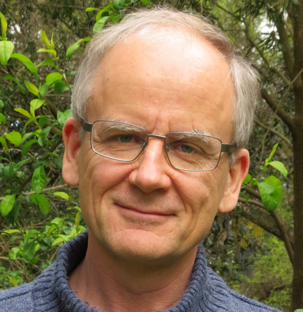
Employer: SA Pathology
Job and description: I lead the bioinformatics groups of the Centre of Cancer Biology and the ACRF Cancer Genomics Facility in Adelaide. Working together with teams of biomedical researchers, we use computational and statistical techniques to analyse molecular data produced with the aid of modern high-throughput genome sequencing machines. The outcomes are used, for example, to advance knowledge of fundamental processes leading to the progression of cancers, and to help uncover and understand the role of a multitude of genetic mutations that give rise to various leukaemias, developmental and neurological disorders. Because we are embedded in the state health system, we also play an important role in translating our research outcomes directly into developing new diagnostic services provided by SA Pathology.
My career story so far: I obtained a BSc (Hons) and MSc in physics at the University of Melbourne and then moved to the University of Adelaide to study for a PhD in theoretical nuclear and particle physics. After 12 years of postdocs overseas and an ARC research fellowship back in Adelaide, I switched careers and moved into the emerging research areas of bioinformatics and computational biology. I was introduced into this by first working in plant bioinformatics and, for almost a decade now, in the biomedical area.
While at first sight moving from physics to bioinformatics may appear to be a dramatic change (it is certainly true that lately I have not had too many occasions to solve any equations of motion!), in many ways a background in the archetypal quantitative and computational science is ideal preparation for working in a field increasingly being dominated by ‘big data’. It is no accident that many of the techniques used in bioinformatics had their origin in the physical sciences and, indeed, it is rare for me to attend a conference where I do not meet fellow physicists. To name a few, Markov processes, subtle signals hidden in high-dimensional matrices of noisy data, Eigen decompositions, data visualisation and mathematical modelling are all part of the lexicon of researchers working in either discipline.
Taking a step back, it is fun to reflect on general similarities and differences between the two parts of my career. Then and now, as a researcher I still spend my days learning new things and solving puzzles. Alas, I also still spend time battling with referees, funding agencies and University bureaucracies, but no need to dwell on that.
Both in physics as well as now I have had the luck and privilege to work with inspiring mentors and colleagues that get as excited as I do by new discoveries or sudden moments of clarity. When working as a physicist, I always got joy out of seeing concepts developed in one area crop up in seemingly unrelated ones, leading to the realisation that they are not unrelated at all. As a bioinformatician, the same is true in spades, given that the field borrows concepts from areas as diverse as physics (of course), computing and information theory, statistics and even computational linguistics.
Publishing a good paper still brings great satisfaction as well. But there are also differences, some unexpected. From time to time – as before by staring at my computer screen, still trying to extract meaning from noisy data — I am now able to directly contribute to the improvement of cancer treatment of a patient or provide genetic information that helps a young couple with their family planning. This is a routine satisfaction for any medical professional, of course, but I was completely unprepared for the pleasure it brings to be able to use skills acquired as a physicist a long time ago in this unexpected new way.
Meet Dr Jonathan Hall, April's Hidden Physicist

Employer: Life Whisperer & Presagen
Job and description: Co-founder and director. Life Whisperer uses a machine-learning medical imaging technique, which has been used to identify viable human embryos prior to implantation. The way it works is through a web browser accessed in clinic, which enables clinicians to drag-and-drop microscope images and instantly receive a report as to the confidence of viability, to support the clinician’s decision about which embryo to transfer to the patient. As infertility continues to increase each year, more couples look to IVF to help them have children. Using deep learning, computer vision, statistics, and physics techniques, Life Whisperer identifies morphological features that constitute a healthy embryo which are often invisible to the human eye. Life Whisperer requires neither significant clinical process change nor costly hardware.
My career story so far: I completed two PhDs (as a crazy person), one in theoretical particle physics (2011) focusing on quantum chromodynamics, and one in nanotechnology specialising in biosensing in embryos (2017), both of which have received awards in their respective fields. These topics have a common thread of simulating resonances in finite volumes (although at vastly different orders of magnitude!). After chairing the international IONS-KOALA 2014 Conference on optics, atomic and laser applications in 2016, I was fortunate enough to be a member of one of the few teams to reach the inaugural CSIRO ON Prime pre-accelerator program for commercialisation in Sydney. On championing an idea for developing a new web-application for classifying human embryo viability, we won the Australian eChallenge awards for both Medical Innovations and Research Commercialization.
We set up Presagen as the company which houses the core AI technology, so that it can be leveraged for future medical imaging products. We developed a new decentralised training technique (patent-pending) in order to change the way health and medical information from around the world is connected. We believe in putting couples first, and empower prospective patients with the goal to improve IVF success rates, and reduce cost and emotional burden on couples by selecting the best embryos.
After officially launching the company in February of 2017, Life Whisperer made significant progress over a short period of time, with recognition from the AIIA as Startup of the Year and Machine Learning/Big Data Innovation of the Year – SA, Top 5 of the finals at TechCrunch Startup Battlefield held in Sydney in 2017, and won ‘Global Winner – One to Watch’ for the APAC region at Talent Unleashed, whose judges included global innovation giants Richard Branson and Steve Wozniak. Since then I got onto the honours list of 10 MIT Technology Review Innovators under 35 (Asia Pacific) in 2019, and was named among the InDaily 40 Under 40 Business Leaders in South Australia, receiving the Entrepreneurial Award for the state in 2019.
Meet Sarah Lugay, May's Hidden Physicist
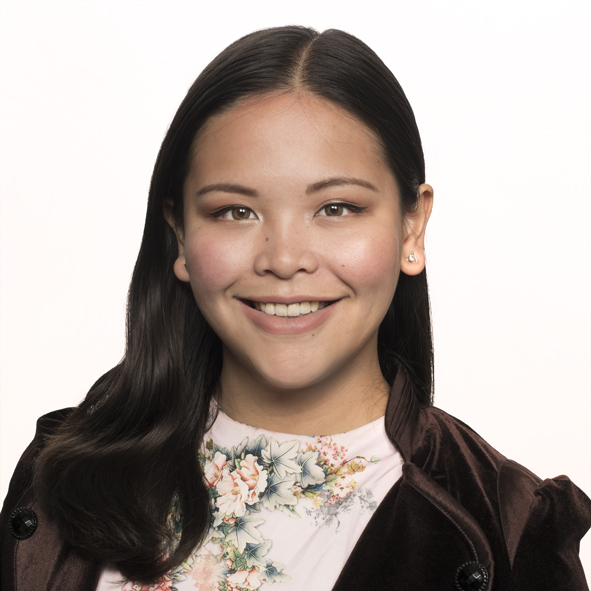
Employer: EY
Job and description: Senior Consultant (Cyber Security) – My team provides companies such as banks with guidance on how to secure their systems against cyber threats such as malware, hackers, human error and downtime. We assist companies in protecting the personal data that you hand over to them when you use their services. I’m not an ethical hacker like everyone thinks – I deal with security assessments, implementation of security policy and uplift of internal processes … which is just as much fun! Next time you are required to agree to a privacy policy or undertake a cyber awareness module for work, think of me! Although cyber security can get tech-centric, this role requires a lot of knowledge on frameworks and legislation as well.
To be a good consultant, you need solid soft skills. Getting a degree in physics taught me how to learn technical content and abstract concepts. I’ve had to learn IT from scratch after graduation. Most of all, a physics degree taught me how to communicate technical content to a non-technical audience, which is what being a consultant is all about. If you can explain the Heisenberg uncertainty principle to your grandmother, you can explain how the Internet works to your colleague in Accounting.
Lastly, cyber security and quantum computing are at the point of intersection. We’re going to need physicists as cyber security experts very soon, especially in the realm of cryptography.
My career story so far:
- Bachelor of Advanced Science (Hons) majoring in physics at UNSW
- Graduate in the 2017 Optus Graduate Program – IT stream
- Security Consultant for Aleron, a small cyber security consultancy
- Senior Consultant for EY, after the acquisition of Aleron by EY
Meet Matthew Wiggins, June's Hidden Physicist

Employer: Radiation and Nuclear Sciences – Queensland Health
Job and description: Health Physicist – I provide radiation science-based solutions to Queensland Government, public and private sector clients. Some tasks require me to travel around Queensland to do radiological surveys of different sites.
These can range from travelling to historical mine sites where mineral sand activities might have been done, to laboratories using radiopharmaceuticals. In some special cases I even had to travel interstate to Tasmania for a radiological survey.
I really enjoy my work as it allows me to apply my studies, travel around Queensland and learning that radiation is used in many different fields and purposes ranging from medical and industrial applications all the way down to simple home appliance like smoke alarms.
My career story so far:
Before I started university I did an online course through the University of Pittsburgh, just to get a taste to see if I would enjoy this field. After realising I did enjoy it all I started my undergraduate degree in science, majoring in physics at the Queensland University of Technology, where I was the president of the QUT physics society and a member of the AIP.
After graduating I took a small break from studies and decided if I could not find a job within the next six months I would start a degree in medical physics. I ended up getting a job at Safe Radiation as a Technical/Scientific officer.
During my time there I joined other societies, such as the South Pacific Environmental Radioactivity Association (SPERA) and the Australasian Radiation Protection Society (ARPS). At one of the ARPS meeting in Queensland there was the advertisement for my current role at Radiation and Nuclear Sciences – Queensland Health. That was only 8 months ago!
In July's bulletin we looked back on a year of hidden physicists.
Meet Dr Sarah Midgley OAM, August’s Hidden Physicist
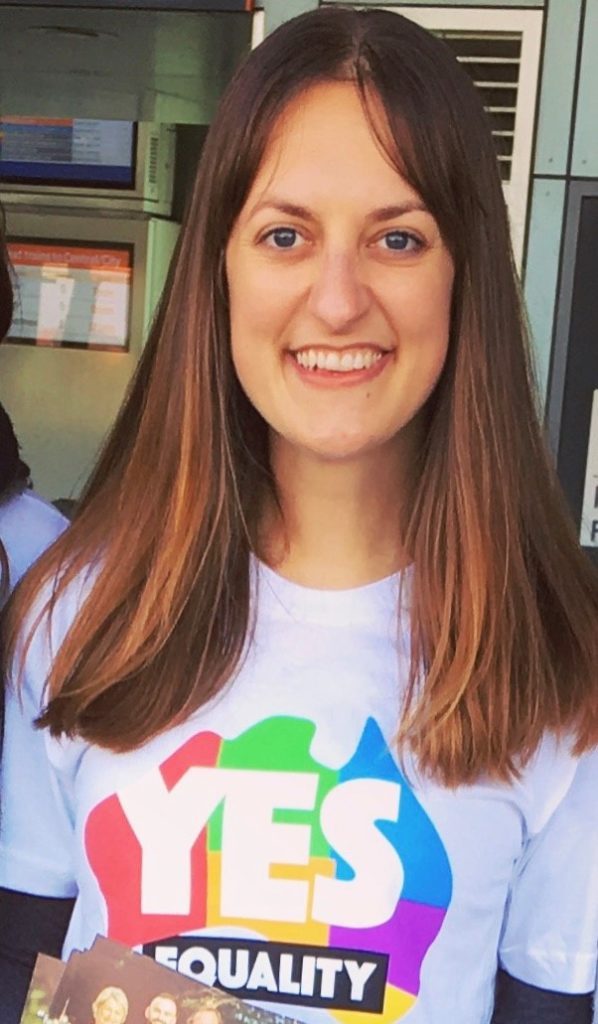
Employer: NSW Department of Education
Job title and description: Manager – Skills Research and Analysis
I currently lead a team of analysts and researchers in economic and skills analysis. We use a range of data sources and industry insights to explore labour market trends and how the world of work is changing, identify jobs and skills in demand and determine the outlook for education and training. I am deeply passionate about the power of education in transforming people’s lives and reducing the skills divide and social inequality.
My physics background provided me with analytical and problem-solving skills that I use in my current role. I also use my specialist knowledge about STEM careers and emerging technologies when providing advice on future jobs in demand or systemic workforce challenges – such as how to increase diversity and women in STEM.
Alongside my career I have also had the privilege to volunteer with a number of community organisations, including Australian Marriage Equality. In 2020 I was recognised with an Order of Australia medal (OAM) for my service to the Lesbian, Gay, Bisexual, Transgender, Intersex and Queer (LGBTIQ) community.
Some Takeaways: While immersed in academic life, it can be hard to see the full range of career pathways open to you as a physicist. Your technical and transferrable skills can be applied in so many exciting careers. Enjoy the journey – expand your experiences as much as possible and support your peers and junior physicists along the way.
My career story so far:
- Bachelor of Science (Advanced) in Physics, Hon I and University Medal (Western Sydney University 2005)
- Graduate Diploma of Science (Physics) (Australian National University 2006)
- PhD in Physics (Theoretical Quantum Physics) (University of Queensland 2011)
- Postdoctoral Research Associate in Physics (University College London, UK 2012)
- Various roles within the Department of Education in vocational education and training with TAFE NSW including as Analyst, Senior Analyst and now Manager in the Strategic Research and Analysis Unit within the Strategy and Policy area.
Meet Dr Phil Dooley, September’s Hidden Physicist
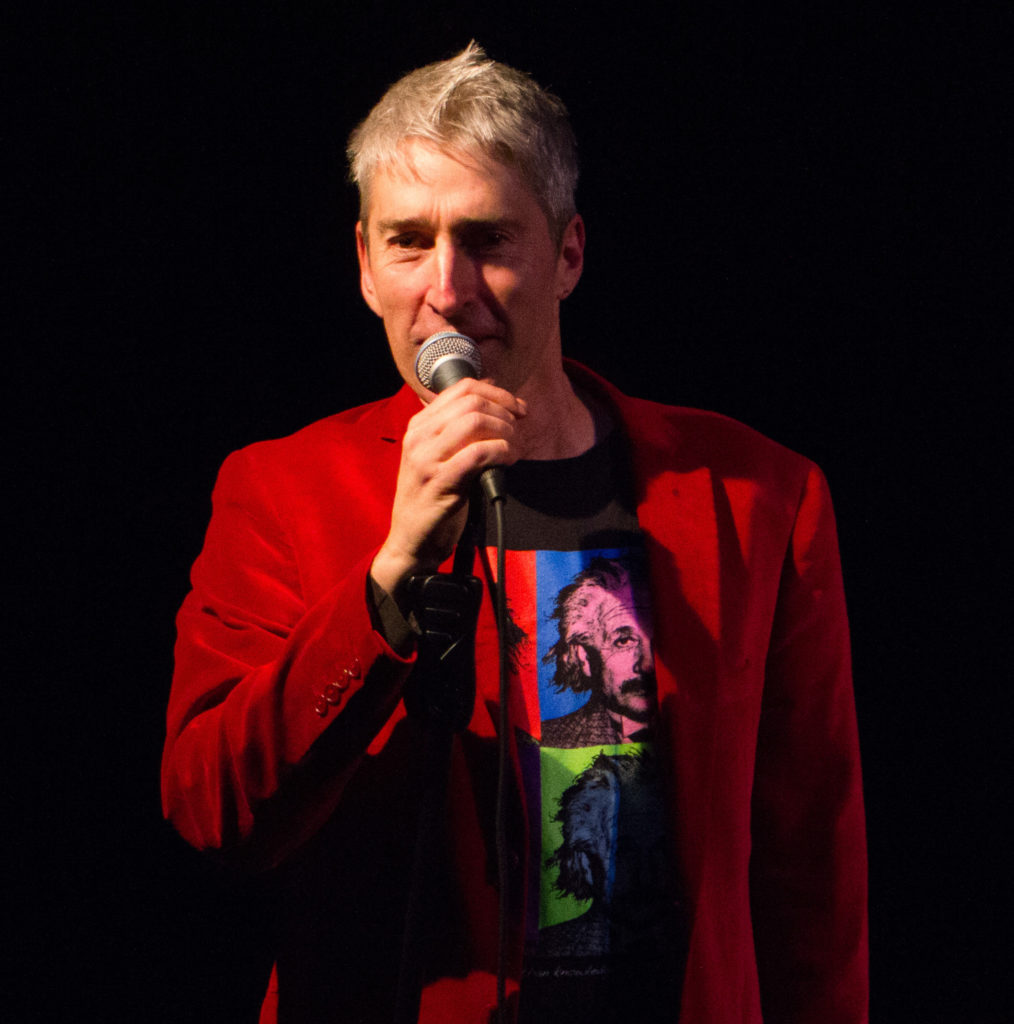
Employer: Self – Phil Up On Science
Job title and description: I’m a freelance science communicator and trainer with a secret ambition to inspire scientists to wow the world with creative, or at least competent, communication.
The rise of pseudo-science and pseudo-experts has appalled me, so I feel that, as a community, we need to get on the front foot by doing something pretty different.
For me, that is a science-theatre collaboration, called Dramatis Scientificae, with a couple of friends who are career writers/directors/actors. We’re making science shows, skits, music and interviews that feature real scientists alongside our comedic characters.
We’ve got to break the science education mould, the obsession with always teaching people when we talk to them. Over the past 20 years we’ve effectively proven that this approach doesn’t work – just look at the climate change debacle.
I have to do paid work, too. I run pub events, write for Cosmos, the American Physical Society, Nature, and was recently selected for The Best Australian Science Writing anthology for the third time in a row. I also run training courses for scientists, alongside some casual work for ANU Physics.
My career story so far:
I did a PhD in laser physics at ANU, and then ran screaming from academia. With my wife, an environmentalist, I moved to Rarotonga, where I picked up IT work in the local bank.
Coming back to Australia I decided to try to get rich, working in IT – ending up in software training.
In 2004 both my parents died, which prompted me to realise that I really missed science. So I started following leads to get into science communication – including joining the Australian Science Communicators, which gave me all kinds of amazing connections. I’m now on the national committee.
I scored a job running the outreach programs at Sydney Uni Physics, and then moved to the UK, doing comms at the current biggest fusion experiment, JET. Not only was it an amazing science experience, but the UK science communication scene blew my mind. I saw a guy called Dr Mark Lewney play Bohemian Rhapsody on electric guitar while the crowd sang quantum mechanics words.
Since coming back to Australia I’ve followed Dr Lewney’s example. I love performing, so I’ve organised Science in the Pub gigs with AIP and other institutions in Canberra, Sydney Melbourne, Brisbane and Adelaide – getting scientists up on stage too, doing something fun themselves.
I also worked for a time in the ANU media office, where I wrote about 300 press releases.
Then I reconnected with my old friend Patrick, and the result was a play called The Poet’s Guide to Science, which features scientists conversing with the characters about ‘controversial’ research, such as GM, vaccines or climate science.
We’ve since taken it to the Sydney and Adelaide Fringe Festivals (and had it rejected by Sydney Science Festival!).
Of course, with COVID-19, the live gigs have dried up. So, I’ve now done my first film shoot with a crew, streamed during National Science Week, focussing on women scientists’ adventures. It included live shenanigans onstage in Star Trek costumes. As a PhD graduate, I would not have expected that!
Meet Dr Shermiyah Rienecker, October’s Hidden Physicist
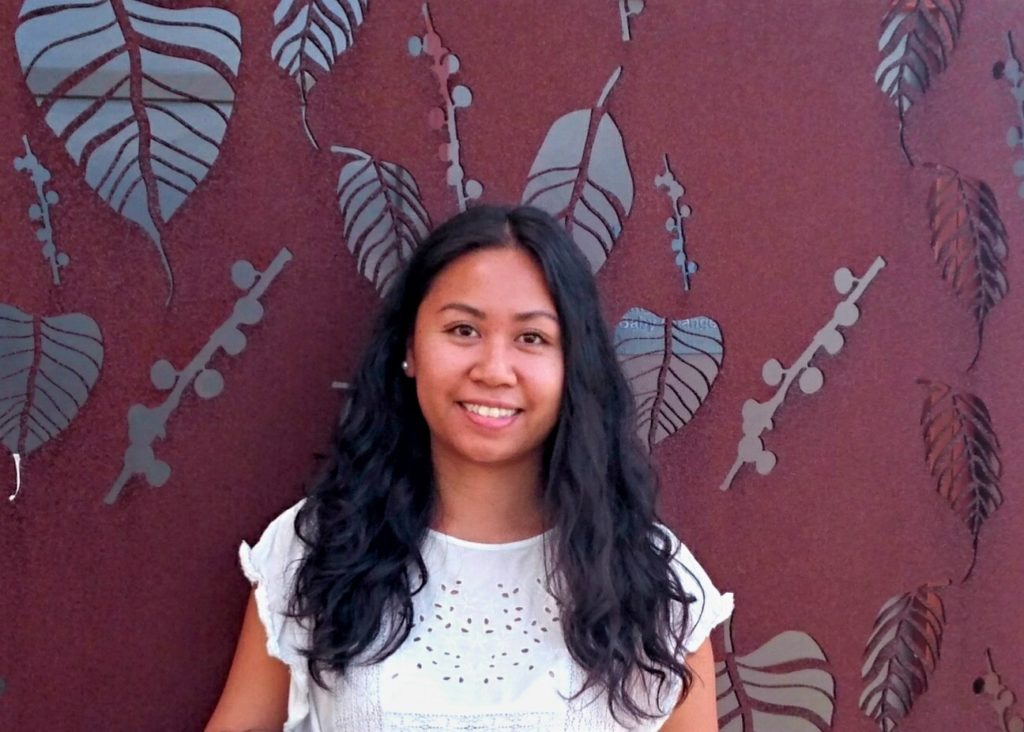
Employer: Biomedical Technology Services (BTS), Queensland Health. BTS provides comprehensive health technology management services to the Queensland public health sector and other healthcare industry customers.
Job title and description: I’m a medical physicist specialising in diagnostic imaging and image-guided therapy applications used in urban, regional, and rural clinics across Queensland. Part of my work involves staying up to date with relevant scientific literature and performing applied research to develop and implement evidence-based best practice. The bulk of my work involves experimentally testing commercial medical imaging applications for day-to-day use and communicating those results in meaningful ways to different stakeholders such as clinicians, equipment manufacturers, asset management, and other physicists for peer-review.
I also work with a team of physicists within BTS that provides operational services, including end-to-end health technology management of breast screening equipment used in Queensland, Northern Territory, and New South Wales for BreastScreen Australia. BreastScreen Australia is a national program that provides free screening services to women to reduce deaths from breast cancer, including more culturally appropriate approaches for Aboriginal and Torres Strait Islander women as part of the Closing the Gap initiative. The job requires travelling to clinical sites, and a high level of teamwork. Some senior physicists within the team transitioned into executive, operational, and business management roles and apply their scientific and technical expertise to provide practical business solutions such as mobile screening vans for remote areas.
My career story so far:
- Honours Bachelor of Science in Medical Physics at Ryerson University (Canada)
- Full-time physics research assistant for research & development, and commercialisation of diagnostic imaging technology at Ryerson University (Canada), Los Alamos National Laboratory (US), and Magnetic Resonance Bavaria Research Centre (Germany)
- Briefly worked from home doing freelance consulting in technical writing, analysis, and quality control for Google Australia, LinkedIn, University of California – San Diego, and private medical practices while waiting for my PhD thesis to be approved
- PhD in Biophysics, Physical Chemistry (Soft Matter Physics) at University of Queensland
- Applied and accepted a job at BTS, Queensland Health
- Finishing up a sessional academic position at Queensland University of Technology developing a course for Magnetic Resonance Imaging Radiation Therapy (MR-RT)
Meet Dr Leon Smith, November's Hidden Physicist
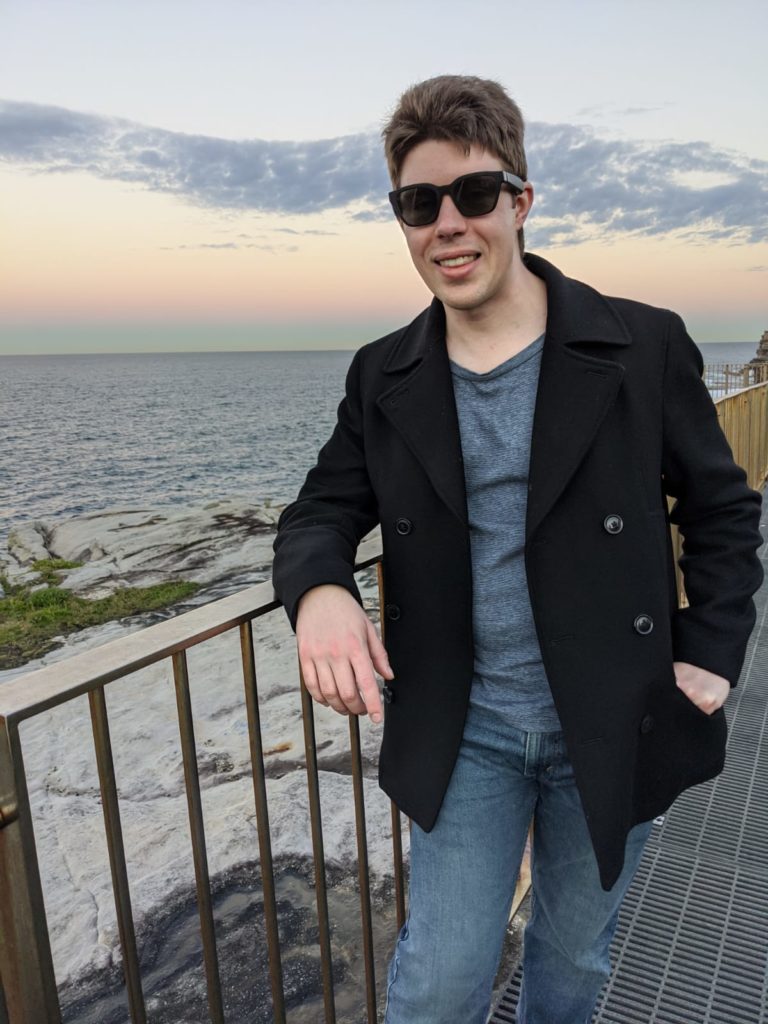
Employer: NSW Health
Job title and description: Trainee Doctor
I work on the rehabilitation ward in a NSW hospital, where I mostly look after patients who have recovered from their acute illness but are still unable to go home, either because they’re weak and deconditioned or their illness has brought them to the point that they need rehab input to get them back to their previous level of function. So I spend a lot of time speaking to patients and their families, developing treatment plans and working with other members of the care team.
Even though I don’t do a whole lot of physics these days, I still use a lot of the skills I developed in my current role. You need a strong scientific foundation in this job, and I still apply my mathematical and technical skills in research and quality activities in the health setting. There’s a huge role for advanced technology in healthcare and I think that’s something we’re going to see more and more of as time goes by- although the human touch is always going to be important too!
My career story so far:
Honours in Medical Physics (University of Sydney 2012), then studied medicine at University of Sydney. Worked in NSW health as a junior doctor from 2016 until now. It’s a long pathway to become a specialist in Australia, lots of training and exams, but it’s well worth the effort!
Meet Nicola Ramm, December's Hidden Physicist
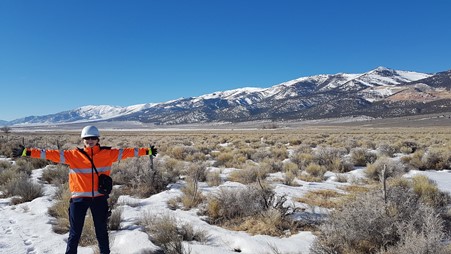
Employer: Institute of Mine Seismology, Tasmania
Job title and description: Geophysicist. I work for a company that provides monitoring of seismic activity within the mining industry for a range of purposes.
My role in the Applied Geophysics branch of the company is to implement projects which utilise ambient noise. These are the waves that occur constantly within the earth, caused by everything from mining machinery and nearby traffic to waves from the ocean. Ambient noise waves bounce around within the earth and sample the surrounding medium. This noise can then be harnessed to see changes in velocity properties of the surrounding rock or ground cover.
I have been involved in applying this technique for safety monitoring of tailings dams, which are structures where toxic mine waste is stored. These are often poorly built and insufficiently monitored, leading to a high number of failures, which can cause catastrophic loss of life and other environmental impacts.
I also work in applying ambient noise techniques to mineral exploration, where the deployment of small seismic sensors at surface can be used to create 3D mapping of the subsurface. This technique is much easier and less environmentally damaging than traditional mineral exploration approaches, such as drilling.
Through my career in geophysics, I have already been lucky enough to travel and be involved in a wide range of projects. I have undertaken surveys in northern Sweden and Nevada. Last year, I was able to present the research my team and I had been working on at several conferences in Perth, France and the AGU Fall meeting in San Francisco.
My career story so far:
I always enjoyed maths and physics and I enrolled in a Bachelor of Marine and Antarctic Science with a major in physics at the University of Tasmania in 2015. I then went on to complete my Honours in physics, looking at using microwave backscatter to measure the sea ice thickness in Antarctica.
I loved applying physics to real-world situations, and upon looking for work after University in 2018, I applied for the position with the Institute of Mine Seismology (IMS). I had no prior knowledge of geophysics, but my solid physics theory foundation has allowed me to adapt and learn the ‘geo’ aspect of my work on the go.
I had almost no knowledge of the mining industry before working at IMS, and it has been a really great opportunity to learn about the workings of such an important industry, which is often out of sight for the wider population. I have really enjoyed the new and diverse projects I get to be involved in, and seeing the ways in which my problem solving can be implemented into real-world solutions.

